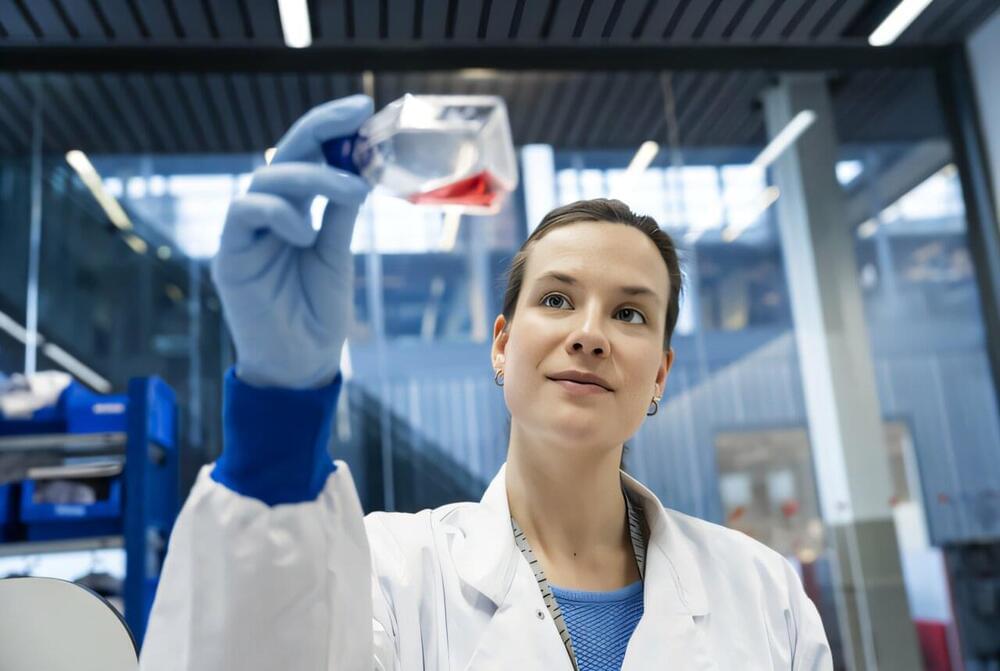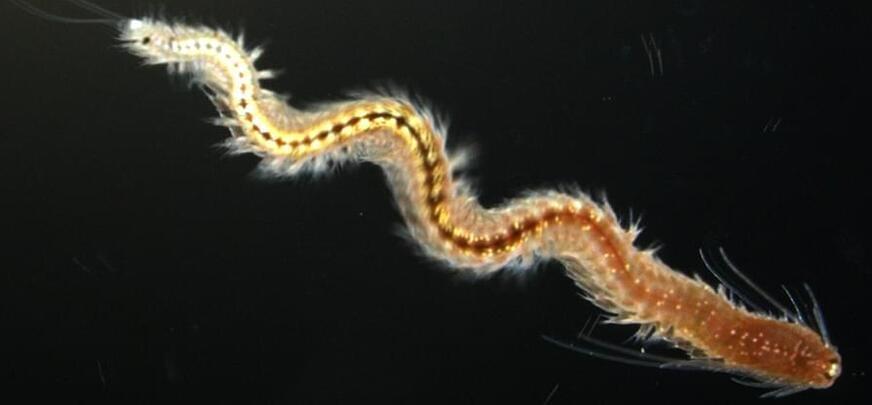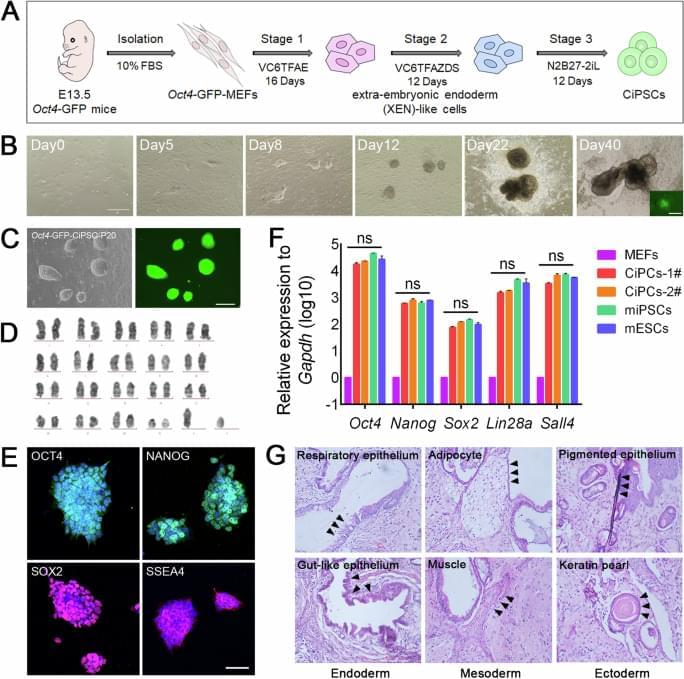Pig-to-human kidney transplants. A blood test for Alzheimer’s. Birth control without a prescription. These were just a few of the advancements in health and medicine in 2024.



Your body is one of the most complex natural structures ever. Billions of cells are put together in a specific way with the result being you. If you look closely between the cells you’ll find the extracellular matrix, a gel-like environment where cells reside and which helps them to talk to each other. However, when disease strikes, cells and the matrix alike can be irreparably damaged, which could lead to the loss of cell function.
In her Ph. D. research, Maritza Rovers looked at ways to make microgel-based scaffolds for cells, which could be used to support eye cells or even promote nerve growth in spinal cord injuries.
Every person on the planet is made up of billions of cells, which are the building blocks of our bodies. Between these cells lies the so-called extracellular matrix (ECM), a gel-like environment in which cells live out their lives.

Two robots, Levita’s Mars and Da Vinci SP, combined for a groundbreaking prostate removal surgery, advancing precision in minimally invasive care.

We’re way behind several species when it comes to regeneration, and scientists are keen to discover the secrets of these other animals so we can learn from them – including, in a new study, the marine worm Platynereis dumerilii.
These worms are experts in regeneration – they can survive losing a large chunk of their bodies – and now we have a better idea of how they’re doing it: specialized cells near a wound are reverting to their original stem cell-like form, before adapting again to replace lost tissue.
Regeneration in most species is handled by stem cells, which develop into whatever type of cells are needed. However, when the end segment of Platynereis is removed, multiple populations of other cells are recruited to swiftly restore the missing body section.
Join us on Patreon! https://www.patreon.com/MichaelLustgartenPhD
Discount Links/Affiliates:
Blood testing (where I get the majority of my labs): https://www.ultalabtests.com/partners/michaellustgarten.
At-Home Metabolomics: https://www.iollo.com?ref=michael-lustgarten.
Use Code: CONQUERAGING At Checkout.
Clearly Filtered Water Filter: https://get.aspr.app/SHoPY
Epigenetic, Telomere Testing: https://trudiagnostic.com/?irclickid=U-s3Ii2r7xyIU-LSYLyQdQ6…M0&irgwc=1
Use Code: CONQUERAGING
NAD+ Quantification: https://www.jinfiniti.com/intracellular-nad-test/
An important update on E5.
Here we look at an attempt to replicate the amazing results with E5 from Dr Katcher’s 2020 paper by an institute that has been set up in Brazil.
Some links are affiliate links so we will earn a commission when they are used to purchase products.
If you would like to support our channel please consider joining our patreon / modernhealthspan.
Stemregen 15% discount Code MODERN https://tinyurl.com/45z968yr (Only available in the US)
Renue By Science 10% discount code MHS: https://tinyurl.com/bdew4bfs.
NMN Powder https://tinyurl.com/syc7rwkh.
DoNotAge 10% discount code MHS https://tinyurl.com/6dbvhv87
NMN https://tinyurl.com/wyzj2f3d CaAKG https://tinyurl.com/2h79stt2
Wellness Extract 10% discount Code MODERNWE Geranylgeraniol Essential http://wellnessextract.com/RICHARDWE Delta Gold Vit E
Pendulum 20% Discount Code HEALTHSPAN
Akkermansia https://pendulumtherapeutics.sjv.io/b…
Metabolic Daily https://pendulumtherapeutics.sjv.io/N…
n1o1 Nitric Oxide 10% discount with code Modern https://tinyurl.com/3esakm4s.
n1o1 Nitric Oxide Lozenges https://tinyurl.com/yh4rrtht.
Age-Defiance Face Cream https://tinyurl.com/4zr959zh.
OmegaQuant 5% discount Code MODERN https://omegaquant.com/shop/
Bulletproof 15% off with coupon code: HEALTHSPAN15: https://tinyurl.com/4npjk5vp.
Inner Fuel Gut support https://bulletproof.fdf2.net/PyDKDM
Omega-3 Krill Oil https://bulletproof.fdf2.net/xkdxmy.
Nuchido Time+ 20% discount of first purchase with code MODERN20 https://nuchido.com/MODERN
OneSkin 15% Discount: Code MODERN https://tinyurl.com/3t6tevj8 OS-01 Face Topical Supplement https://tinyurl.com/29c8wrr2
Neurohacker Qualia Senolytic https://tinyurl.com/22t9thrn.
TruDiagnostics 12% Discount Code MODERN TruAGE PACE https://trudiagnostic.pxf.io/oqYVMY
☕If you would like to support our channel, we’d love a coffee…thank you! https://www.buymeacoffee.com/mhealthspan.
⏲️Chapters.
🌐Links in this video.


Doshi et al. present a very nice systematic evaluation of minimal requirements for adenoviral helper genes necessary in production of AAVs, as well as some progress towards stable cell lines with integrated helper genes.
The replication-defective adeno-associated virus (AAV) is extensively utilized as a research tool or vector for gene therapy. The production process of AAV remains intricate, expensive, and mechanistically underexplored. With the aim of enhancing AAV manufacturing efficiencies in mammalian cells, we revisited the questions and optimization surrounding the requirement of the various adenoviral helper genes in enabling AAV production. First, we refined the minimal set of adenoviral genes in HEK293 AAV production to E2A, L4-22K/33K, and VA RNA I. These findings challenge the previously accepted necessity of adenoviral E4orf6 in AAV production. In addition, we identified L4-22K genes as crucial helpers for AAV production.

Zhao, N., Zhang, CJ., Zhang, X. et al. npj Regen Med 9, 42 (2024). https://doi.org/10.1038/s41536-024-00387-7